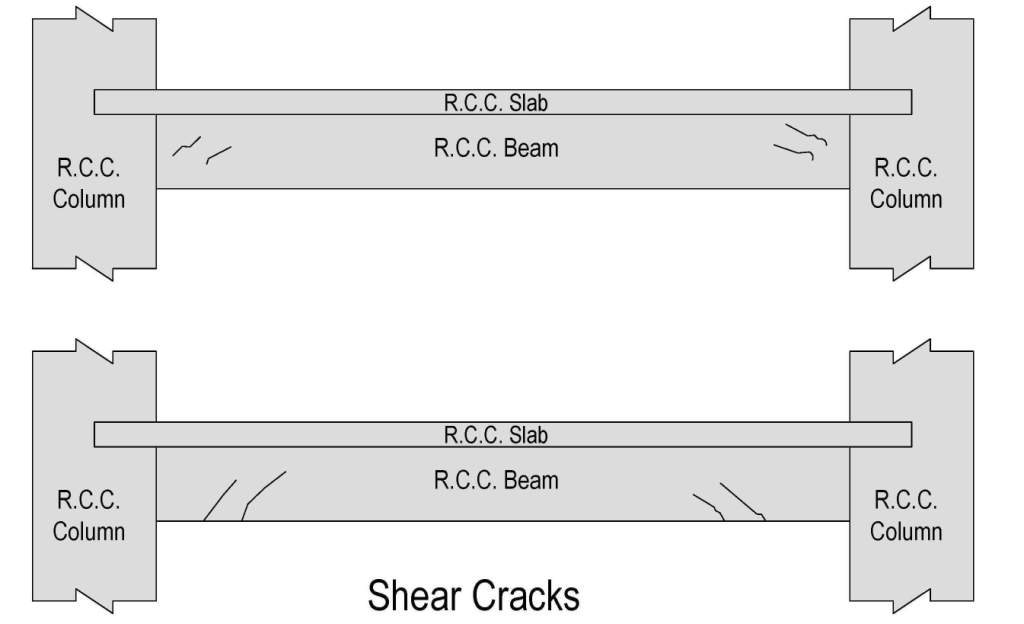Reinforced concrete beams are integral components of structures, providing essential support and strength. Despite their robustness, these beams are susceptible to various types of cracks over time, compromising their structural integrity. This article delves into the common causes of cracks in reinforced concrete beams and explores strategies for understanding, preventing, and addressing this issue.
Causes of Cracks in Reinforced Concrete Beams:
Loading Conditions:
Description: Excessive loads, whether static or dynamic, can lead to cracks in reinforced concrete beams. Overloading puts stress on the beam, especially at vulnerable points such as the midspan or near supports.
Preventive Measures: Proper structural design, considering anticipated loads, helps prevent overloading. Regular structural assessments ensure that the beams can withstand expected loads.
Temperature Fluctuations:
Description: Temperature differentials can cause thermal expansion and contraction, leading to cracks in concrete. Rapid temperature changes, especially in regions with extreme climates, exacerbate this issue.
Preventive Measures: Incorporating expansion joints in the design accommodates temperature-induced movements, reducing the likelihood of cracks. Thermal insulation and reflective coatings can also mitigate temperature-related stress.
Inadequate Reinforcement:
Description: Improper placement or insufficient quantity of reinforcement can result in cracks, particularly in tension zones where concrete is prone to cracking.
Preventive Measures: Engineers must adhere to proper reinforcement detailing and placement guidelines. Ensuring adequate cover to reinforcement and employing quality control during construction helps prevent these issues.
Inadequate Curing:
Description: Improper curing of concrete during the early stages of setting can lead to surface cracks. Inadequate moisture or premature removal of formwork can hinder proper hydration.
Preventive Measures: Employing appropriate curing methods, such as wet curing, curing compounds, or insulating blankets, promotes uniform hydration and reduces the risk of surface cracking.
Chemical Reactions:
Description: Certain chemical reactions, such as alkali-aggregate reactions or sulfate attack, can contribute to the development of cracks over time.
Preventive Measures: Conducting thorough material testing and selecting suitable concrete mixtures can help mitigate the impact of chemical reactions. Using appropriate sealants and coatings adds an extra layer of protection.
Addressing Cracks in Reinforced Concrete Beams:
Early Detection:
Description: Regular inspections and monitoring are crucial for identifying cracks in their early stages. Visual inspections, non-destructive testing, and structural health monitoring can help detect issues promptly.
Remedial Actions: Once cracks are identified, engineers can implement appropriate remedial measures based on the severity and type of cracks.
Crack Repair Techniques:
Description: Various crack repair techniques, such as epoxy injection, polyurethane grouting, or crack stitching, can be employed to restore the structural integrity of the beam.
Remedial Actions: Selecting the most suitable repair method depends on factors like crack width, depth, and the underlying cause. Professional assessment guides the choice of the most effective repair strategy.
Strengthening Measures:
Description: Strengthening measures, such as external bonding of fiber-reinforced polymers (FRP) or additional steel reinforcement, can be applied to enhance the load-carrying capacity of beams.
Remedial Actions: Structural engineers may recommend strengthening interventions based on the specific requirements and conditions of the cracked beams.
Conclusion:
Cracks in reinforced concrete beams are a common challenge in the realm of construction, but with a thorough understanding of their causes and effective preventive and remedial measures, engineers can ensure the long-term durability and safety of structures. By combining proper design, construction practices, and proactive maintenance, the impact of cracks on reinforced concrete beams can be minimized, preserving the integrity of our built environment.

